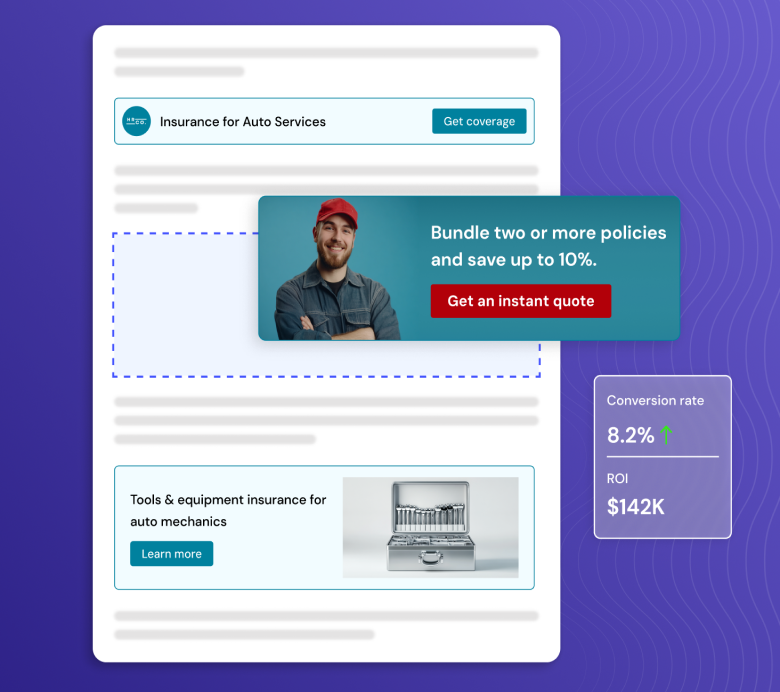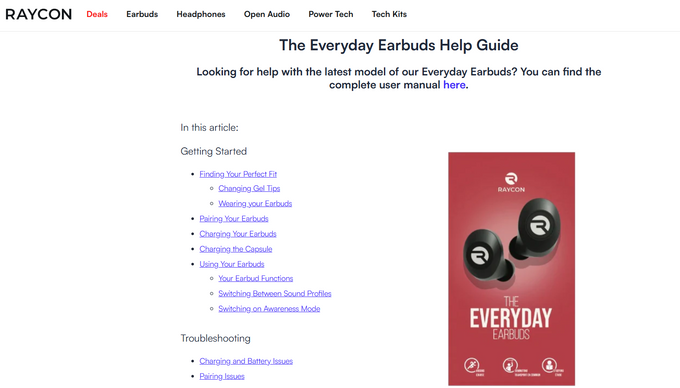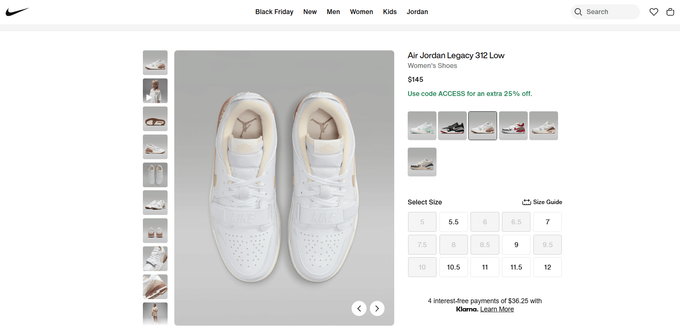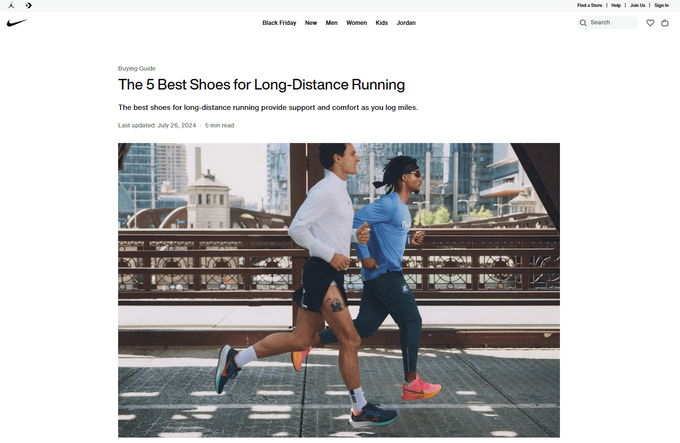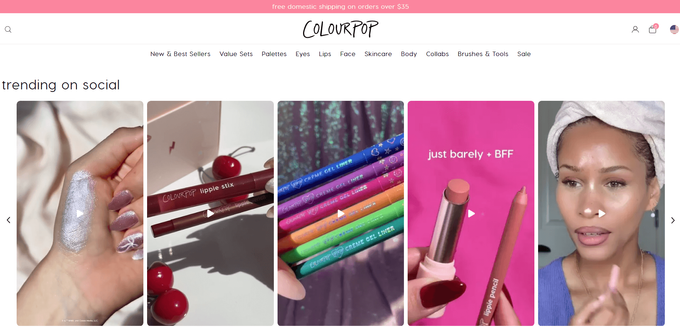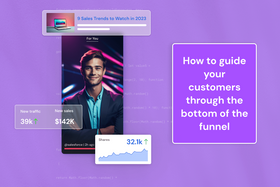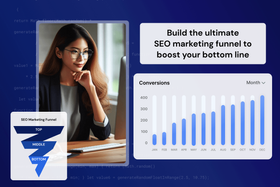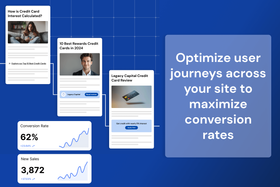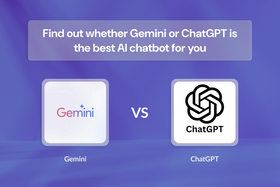9 high-impact content marketing strategies for e-commerce in 2026
Standing out in the crowded e-commerce space may feel next to impossible, but these content marketing strategies can help cut through the noise.
Updated February 27, 2025
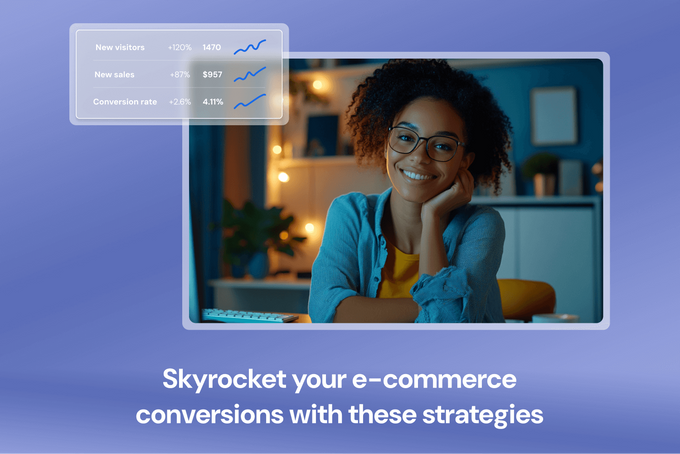
With so many e-commerce stores competing for attention, today's online shoppers have started craving stories, insights, and experiences before hitting that buy button. The latest numbers back this up: content marketing generates around three times as many leads as outbound marketing while costing 62% less.
Clearly, paid ads aren't the only viable option to increase conversions for your e-commerce store. But you'll need a strategic approach to turn your online store into a customer-converting powerhouse. Let's dive into nine content marketing strategies for e-commerce that actually move the needle.
Key takeaways
- Help customers find what they want faster by using interactive tools like quizzes instead of making them browse endlessly.
- Use videos, demos, and images from real customers to demonstrate how your products work.
- Tell your brand's story everywhere your customers find you; just adjust how you tell it for each platform.
- Get customers involved by sharing user-generated content—people trust real experiences more than marketing speak.
What is content marketing?
Content marketing is a marketing strategy used to attract and engage potential customers or leads through valuable content, such as blogs, emails, videos, social media posts, and white papers, across various channels. The primary goal of content marketing is guiding users through their journey toward conversion with helpful content that educates, entertains, or solves their problems.
When using content marketing for e-commerce, this goal remains the same. When done right, content marketing can benefit your e-commerce business in the following ways:
- Increased brand awareness
- Higher search engine rankings
- More conversions
- Improved trust and credibility
- Lower acquisition costs
- Better customer retention
» Discover proven strategies to improve content marketing ROI.
9 content marketing strategies for your e-commerce store
1. Curate interactive product discovery experiences
Think of interactive content as your digital sales team—helping customers overcome decision paralysis when faced with too many options. When shoppers can actively engage with tools that narrow down their choices based on their needs, they're more likely to find products that fit their requirements and feel confident in their purchase decisions.
The key is making these tools genuinely helpful, not just technically impressive. Start by mapping your customers' main pain points when selecting products, then build interactive elements that directly address these challenges. For example, you can create a quiz and embed it on your homepage and product pages—like this one from Il Makiage.
» Discover the most effective types of content marketing.
Here's how to get started:
- Pick your bestselling product category and whip up a quick quiz addressing the top 3 questions customers usually ask.
- Make it smart—let each answer shape the next question for a more personal experience.
- Keep it short; nobody wants to answer 20 questions before seeing products.
- Don't just show them a category. Point them to specific products relevant to them.
- Get feedback from your customers and tweak it until it works.
» Explore conversion strategies that maximize sales and ROI.
2. Develop product education content libraries
Ever notice how customers who truly understand your products are the ones who keep coming back? That's because knowledge builds confidence, and confident customers convert. In fact, research shows customers who engage with educational content are 131% more likely to make a purchase.
To create an effective library, try not to dump every bit of product information into one place. Start with your bestselling products and build out content that addresses the most common customer questions and pain points. Think product guides, care instructions, and tutorials that actually solve problems instead of just listing features. Raycon's Everyday Earbuds Help Guide is a great example of this.
» Increase traffic and generate more leads with top-of-funnel marketing.
3. Build visual content ecosystems
Since most web visitors only read 25% of the text on a page, your product visuals need to do some serious heavy lifting. These days, slapping a few product photos on your site might not cut it—shoppers expect immersive visual experiences that tell your product's story at a glance.
Here are some tips to build a visual ecosystem that converts:
- Start with crystal-clear product photography from multiple angles.
- Create short videos showcasing your product.
- Add 360-degree views for complex or detailed items.
- Sprinkle in authentic user-generated content to build trust.
- Show your products in real-world situations so customers can imagine owning them.
Nike manages to tick all of these boxes with their product visuals.
4. Implement data-driven personalization
Gone are the days of one-size-fits-all content. Modern shoppers expect experiences tailored to their interests, and they're quick to leave when they don't find them. Thankfully, your customers' user data will tell you exactly what content they want; you just need to pay attention to their digital body language.
Start by segmenting your audience based on browsing behavior, purchase history, and engagement patterns. Then, create targeted content that speaks directly to each group's needs. If a customer frequently browses athletic wear, show them sports-related content first. If they're price-sensitive, highlight value-focused content and deals. The key is making every interaction feel like it was designed specifically for them.
» Want to generate more sales through content marketing? Chat with us.
5. Create product-focused bottom-of-the-funnel content
If you want to keep readers engaged and actually convert them, you need to create bottom-of-the-funnel pages, such as top 10, comparison, and alternative articles. These articles could live on any blog, so create content that converts by directly connecting your products to customer pain points. If you sell running shoes, write about "10 best running shoes for high arches" or "5 best alternatives to Nike running shoes."
Create pages that actually help customers make decisions. Break down technical features into real benefits, compare different product categories, and explain exactly which products work best for specific use cases. When you focus on solving real dilemmas, product recommendations feel like helpful suggestions rather than sales pitches.
» Learn how to measure content marketing ROI.
6. Create multi-channel product narratives
A consistent narrative is vital; your product story shouldn't change just because the platform does. Whether a customer finds you on Instagram, TikTok, or your blog, they should get the same core message—just packaged differently. Think of it like telling the same story to different audiences: You'll use different words and examples, but the heart of the message stays the same.
To adapt your best-performing content across channels, turn that detailed product guide on your blog into a snappy TikTok how-to video. Then, grab the best shots for an Instagram tutorial. Each piece of content feeds into the next, while your brand voice and key selling points stay rock solid across platforms.
» Talk to an expert about creating content for multiple channels.
7. Design customer success programs
Your relationship with customers shouldn't end at checkout. A solid customer success program turns one-time buyers into repeat customers by helping them get genuine value from their purchases. Think of it as being your customer's product coach, not just their seller. This email from Bored Cow, which contains a recipe that includes their product, is the perfect example of how to keep customers engaged and coming back for more.
Map the customer journey and its key moments—from unboxing to first use to mastery—and create content that supports each stage. Send timely how-to guides, share maintenance tips, or highlight advanced features when customers are ready for them. The goal is to help customers become familiar with your products before they even think about asking for help.
» Get to know the stages of the user journey.
8. Leverage user-generated content
If your customers are already talking about your products, try to bring those conversations to your platform. Remember, potential buyers trust real users way more than they trust marketing copy. So, user-generated content effectively turns happy customers into brand advocates.
Create spaces where customers can share their experiences, tips, and creative uses of your products. This could be a dedicated hashtag on your social media, a review section on your site that encourages detailed feedback, or a forum where users help each other. Some e-commerce brands, like ColourPop, even embed user-generated social media videos on their homepage.
» Encourage community engagement by adding social media to your conversion funnel.
9. Create seasonal content campaigns
Your products might be available year-round, but your content shouldn't ignore the calendar. Seasonal campaigns tap into what's already on your customers' minds, making your products feel more relevant and timely. Whether it's back-to-school season or holiday shopping, timing your content to match shopping patterns just makes sense. For example, Dr. Squatch created this video to promote their collaboration with Liquid Death—just in time for Halloween.
Plan your content calendar around key shopping seasons, but don't just stick to obvious holidays. Think about your customers' yearly routines—when do they shop for specific products? When do they start researching big purchases? Create targeted content that anticipates these moments, and you'll catch them right when they're ready to buy.
Boost e-commerce sales with content marketing
Content marketing's effectiveness for e-commerce lies in combining individual strategies to create a seamless customer experience. Start by picking one or two strategies that align with your current capabilities and customer needs. Test them thoroughly, measure what works, and build from there. Whether you're focusing on interactive tools, visual content, or user-generated content, success comes from understanding your customers and delivering content that genuinely helps them make better buying decisions.
» Explore proven techniques to increase sales with e-commerce CRO.
